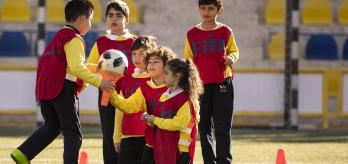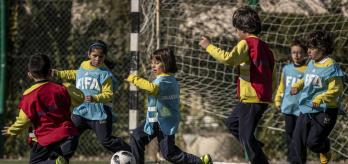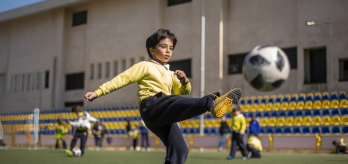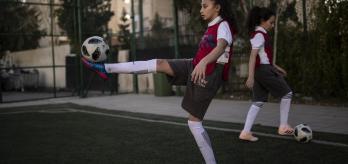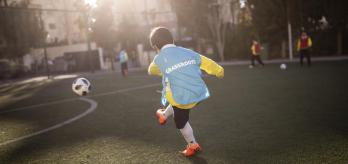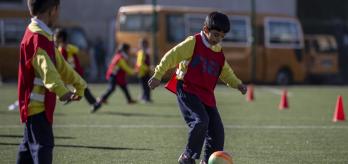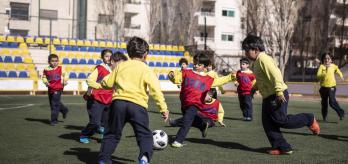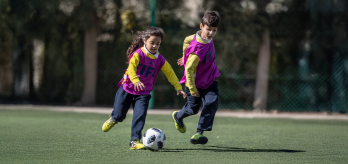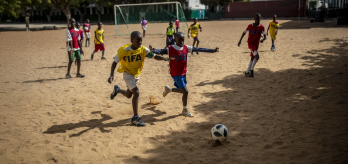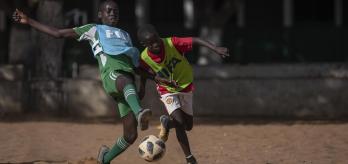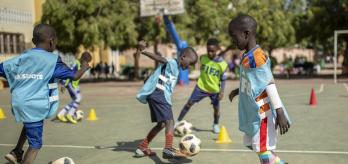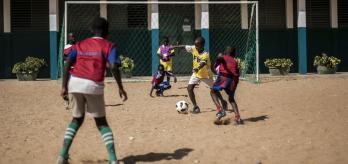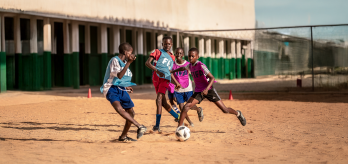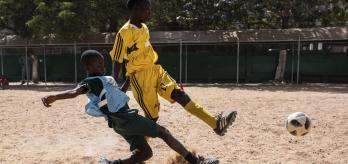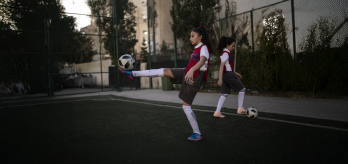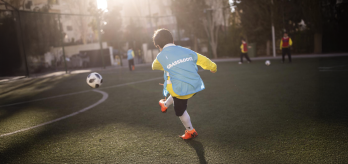In this edition of FIFA’s Grassroots Coaching Essentials series, Dr Vanessa Martínez Lagunas looks at how coaches can optimise game application for players in the key developmental stage of ages 12-15. Her approach centres around the importance of linking activities with the main session theme, adopting a progressive structure during practice, and tailoring an exercise based on the players’ needs.
In the presentation below, Vanessa explores how optimising game application can support holistic development for this age category. Following the video is a summary of the presentation, including an explanation of her three key coaching tips, as well as sample activities to help coaches deliver meaningful, engaging training activities that will bring the game to life for players on the pitch.
Tip 1: Ensure main theme alignment
In this age category, players must begin making a real connection between training and matches. As such, it is important that game application activities are closely aligned with the session’s main theme. In this first section, Vanessa discusses how coaches can create clear, consistent learning experiences by anchoring activities to the primary focus of the session, and how to promote player understanding through guided discovery:
-
Connect to the main theme: The chosen activities by the coach should link to the core theme of the session to ensure that players can apply the specific skills or concepts being developed.
-
Ask leading questions: Coaches should ask thought-provoking, guided questions to the players, so that they can recognise independently the key learning points from the activity.
-
Always ensure safety: It is vital that players have a safe playing area for practice. Coaches should establish free zones between pitches, especially when managing multiple groups during an activity.
Tip 2: Adopt a progressive approach
In football, as young players develop, training becomes more complex and challenging over time. However, Vanessa believes the same should happen within a session. Here, she shares how using a progressive approach, and increased competition and inclusivity help players to stay engaged to get the most out of an exercise, optimising game application:
-
Natural progression within the activity: Aim to increase the demands for the players during an exercise by progressing from simplistic to challenging, while still keeping the main theme central to practice.
-
Competition increases engagement: Introducing an element of competition can help move the activity forward, keeping players motivated, engaged and enjoying themselves as they develop their technical ability.
-
Ensure all players are included: Activities should be adapted by the coach to ensure that all players can participate and translate skills at their own pace.
Tip 3: Tailor to players’ needs
When attempting to increase the complexity of an activity or take training to another level, which will help convert practice to real matches, it is important to tailor activities to suit the capabilities of the players, providing room for a greater challenge. Vanessa explains how adapting activities can prepare players in this age group for more advanced challenges:
-
Players will grasp tactical concepts: Activities based on game application support players with understanding key tactical concepts such as positioning, off-the-ball movement and team shape in game-realistic situations.
-
Adapting to increased pressure: Allowing players to practise their skills in game-like scenarios helps them learn to deal with pressure, developing adaptability and resilience on the pitch.
-
Prepares players for the highest levels: By gaining confidence in game application in this stage of their journey, players will have a solid platform to advance towards more nuanced tactical understanding and competitive performance in later stages.
Key Take-aways
By focusing on translating skills from practice to real-game situations, coaches help to bridge the gap between learning and performing for players. When delivered with purpose and progression, these activities enhance greatly both the technical and tactical execution and understanding on the pitch. Here is a summary of the key take-aways from Vanessa’s presentation regarding optimising game application:
-
Make shooting practice fun and enjoyable: Shooting is one of the most enjoyable aspects of football for any child, and allows them to emulate their favourite players.
-
Repetition is key to development: Players must have plenty of opportunities to shoot at goal to develop their skills in this area.
-
Start simple, then increase the challenge: Start by having players focus on technique over power. Later on, you can increase the difficulty and up the pace of the session to challenge their skills.


